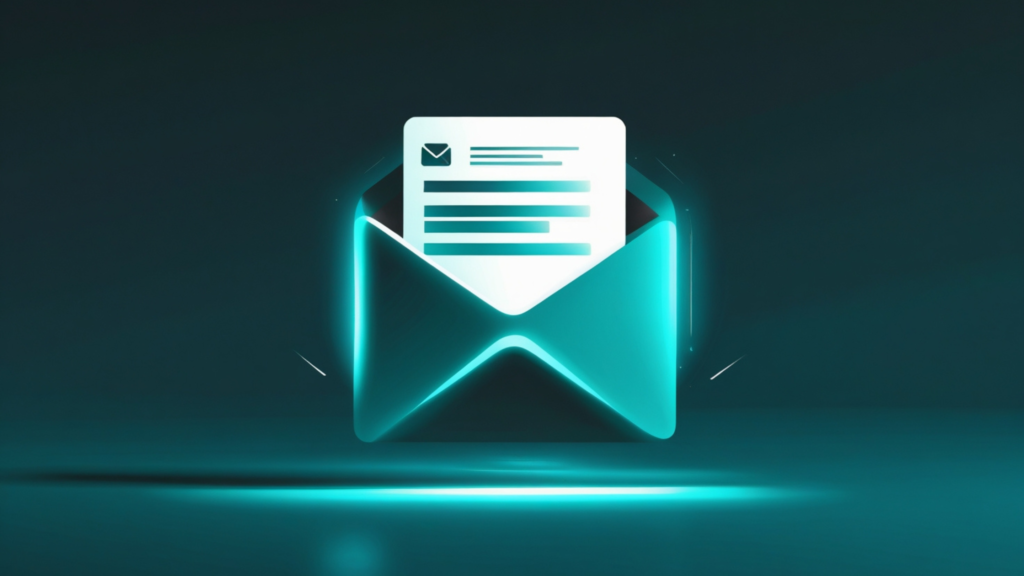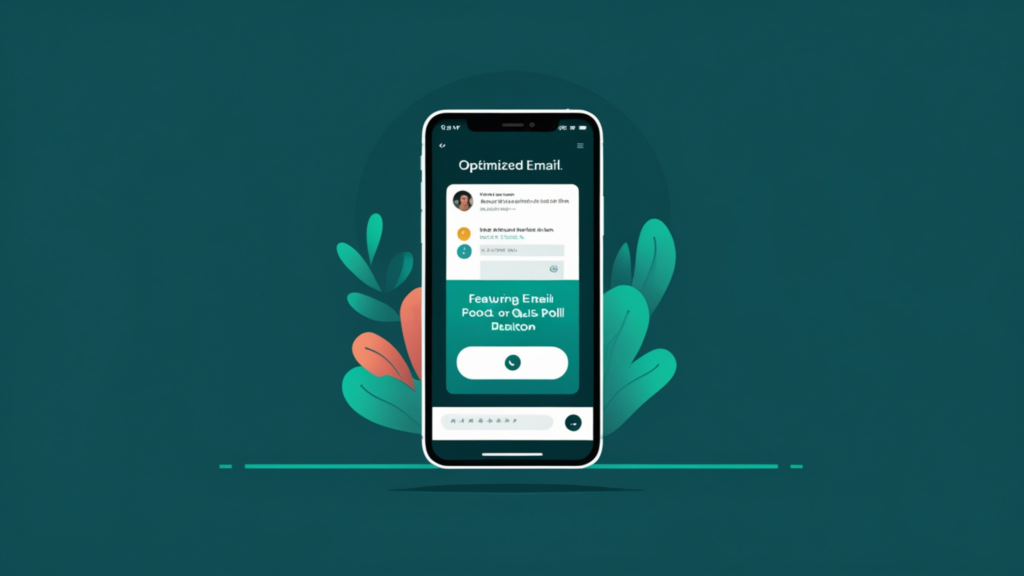
Email marketing remains one of the most effective ways to connect with an audience, but the challenge in 2025 is standing out in overcrowded inboxes. While businesses continue to rely on email as a primary marketing channel, open rates have declined due to increased competition, spam filters, and shifting consumer behavior.
However, email marketing is far from dead—it’s evolving. The brands that personalize, optimize, and refine their email strategies will continue to see strong engagement.
This article explores three proven email marketing tips to improve email open rates in 2025. Each section covers why the method works, how to implement it, and real-world examples to help marketers create high-performing email campaigns.
By the end of this guide, you’ll learn how to:
- Use AI-driven personalization to craft emails that feel custom-made.
- Write compelling subject lines that encourage recipients to open your emails.
- Optimize emails for mobile devices and interactive engagement.
1. Leverage AI-Driven Hyper-Personalization
Generic email campaigns no longer work. In 2025, personalization goes beyond using a recipient’s first name—it involves tailoring content based on individual behavior, preferences, and engagement patterns.

Why AI-Driven Personalization Works
Personalized emails consistently outperform mass emails. Here’s why:
- Emails with personalized subject lines see a 41 percent higher open rate than generic ones.
- Segmented campaigns generate 94 percent higher click-through rates than non-segmented campaigns.
- AI-driven email scheduling can increase open rates by up to 30 percent by delivering emails at the optimal time.
How to Implement AI-Powered Email Personalization
1. Utilize AI for Customer Data Analysis
AI-powered email platforms like HubSpot, Marketo, and Mailchimp can track:
- Browsing history (what pages or products a user has viewed).
- Past purchases (what a customer has bought before).
- Email engagement behavior (whether they open, click, or ignore emails).
Example: A software company tracks that a subscriber frequently reads blog posts about automation tools. The AI system can then trigger an email offering a free trial of the company’s automation software.
2. Implement Dynamic Content Adaptation
Rather than sending one-size-fits-all emails, AI can dynamically adjust headlines, images, and text based on the recipient’s interests.
Example: A fashion brand could send an email featuring men’s or women’s clothing depending on the recipient’s browsing history.
3. Predictive Analytics for Send Time Optimization
AI-powered systems predict the best time to send emails based on a recipient’s past behavior.
Data-backed insight: Sending emails when a recipient is most active improves open rates by up to 30 percent.
Example: If a recipient usually opens emails at 8 AM, AI will ensure that future emails arrive at that time.
4. Create Advanced Segmentation
Instead of segmenting users only by age, gender, or location, AI enables segmentation by:
- Purchase behavior (e.g., frequent buyers vs. one-time customers).
- Engagement level (e.g., highly active users vs. inactive ones).
- Preferred content type (e.g., video watchers vs. blog readers).
Key takeaway: AI ensures that every recipient gets content that is highly relevant to them, increasing engagement.
2. Write Psychologically Compelling Subject Lines
Your subject line determines whether an email gets opened or ignored. Studies show that 47 percent of recipients open emails based on the subject line alone.

Why Subject Lines Matter
- Emails with emotion-driven subject lines see a 22 percent higher open rate.
- Curiosity-based subject lines tend to outperform straightforward ones.
How to Write Subject Lines That Get Clicked
1. Evoke Curiosity
People are naturally curious. Subject lines that hint at something interesting but don’t reveal everything encourage recipients to open the email.
Example: “You’re Making This Email Marketing Mistake—Here’s How to Fix It”
2. Create Urgency and Scarcity
Urgency encourages action. When people feel they might miss out, they are more likely to open the email.
Example: “Only 24 Hours Left to Claim Your Exclusive Offer”
3. Use Emotional Triggers
Emotion-based subject lines grab attention. Excitement, curiosity, humor, or even mild anxiety can drive engagement.
Example: “If You Ignore This, You Might Regret It Later”
4. Go Beyond First-Name Personalization
Personalized subject lines feel more relevant.
Example: “Hey [Name], Your Favorite Product is Back in Stock!”
5. A/B Test Subject Lines
Use tools like Brevo, Litmus, or Mailchimp to A/B test subject lines and determine which ones work best.
Key takeaway: The more engaging, relevant, and emotionally driven the subject line, the higher the open rate.
3. Optimize for Mobile and Implement Interactive Elements
More than 70 percent of emails are opened on mobile devices. If an email isn’t optimized for mobile, it may get deleted without being read.

How to Optimize Emails for Mobile and Engagement
1. Use Mobile-Friendly Responsive Design
- Choose responsive email templates from Mailchimp, HubSpot, or SendGrid.
- Use large, easy-to-tap buttons instead of small links.
2. Keep Content Concise and Scannable
- Keep subject lines under 50 characters.
- Use short paragraphs, bullet points, and bolded key phrases to improve readability.
3. Add Interactive Elements to Drive Engagement
Interactive elements increase email engagement by 50 percent or more.
- Polls and quizzes – Ask recipients to participate in a one-click poll.
- GIFs and animated images – Catch attention with subtle animations.
- AMP for Email – Allow users to complete forms, browse products, or book meetings directly within the email.
Example: A travel company sends an email featuring an interactive vacation quiz, helping users choose their ideal destination.
4. Optimize Load Speed and Call-to-Action (CTA) Buttons
Slow-loading emails leads to higher bounce rates.
- Compress images for faster load times.
- Ensure CTA buttons are large, clear, and thumb-friendly.
Key Takeaways and Next Steps
If you want to increase your email open rates in 2025, focus on:
- AI-driven personalization – Use data to send tailored, relevant content.
- Psychologically compelling subject lines – Grab attention and spark curiosity.
- Mobile-friendly and interactive emails – Ensure seamless engagement across devices.
The most successful email marketers test, refine and optimize continuously. Which of these strategies will you try first?
FAQs: Email Marketing Open Rates in 2025
1. What is a good email open rate in 2025?
A good email open rate in 2025 varies by industry, but the average benchmark is between 20% and 30%. High-performing campaigns can exceed 35%, especially when using personalization, AI-driven optimization, and compelling subject lines.
2. How can I improve my email open rates?
To improve email open rates, focus on:
- Writing engaging subject lines that spark curiosity.
- Using AI-driven personalization to send relevant content.
- Optimizing send times based on recipient behavior.
- Ensuring mobile-friendly design for better readability.
- Regularly cleaning your email list to remove inactive subscribers.
3. Why are my email open rates so low?
Low open rates can result from:
- Poor subject lines that fail to capture attention.
- Emails being marked as spam due to poor sender reputation.
- Sending emails at the wrong time when recipients are inactive.
- Lack of personalization, making emails feel generic.
- A cold or disengaged audience that no longer finds value in your content.
4. How does AI help increase email open rates?
AI improves open rates by:
- Analyzing recipient behavior to determine the best send times.
- Generating personalized subject lines and email content.
- Segmenting audiences based on engagement and interests.
- Predicting what type of content will resonate with each recipient.
5. What are the best subject lines to increase email open rates?
Effective subject lines include:
- Curiosity-driven: “You Might Be Missing This Key Marketing Strategy”
- Personalized: “Hey [Name], Here’s a Special Offer Just for You”
- Urgency-based: “Only 12 Hours Left to Claim Your Spot”
- Question-based: “Are You Making These Common Email Mistakes?”
6. How often should I send marketing emails?
The best email frequency depends on your audience and industry. Most businesses see success with 1 to 3 emails per week. Too many emails can lead to unsubscribes, while too few can cause low engagement.
7. What is the best time to send emails for higher open rates?
The best send times depend on your audience, but data suggests:
- B2B emails: Tuesday to Thursday, between 10 AM and 2 PM.
- B2C emails: Evenings and weekends tend to work well.
- AI tools can analyze your audience’s behavior and determine personalized optimal send times.
8. How can I prevent my emails from going to spam?
To keep emails out of spam folders:
- Avoid spam-trigger words like “free,” “win,” or “guaranteed.”
- Use a verified sender domain with proper DKIM, SPF, and DMARC settings.
- Maintain a clean email list and remove inactive subscribers.
- Encourage recipients to whitelist your email address.
- Keep email content engaging and relevant to avoid spam complaints.
9. Does mobile optimization affect email open rates?
Yes, more than 70% of emails are opened on mobile devices. Non-mobile-friendly emails often get deleted immediately. Use responsive design, short paragraphs, large fonts, and clear CTA buttons to improve engagement.
10. Should I A/B test my email campaigns?
Yes, A/B testing helps determine what works best. You can test:
- Different subject lines to see which gets more opens.
- Various send times to find peak engagement periods.
- Personalized vs. generic content to compare response rates.
- Different CTA placements to see what drives more clicks.
11. How does personalization affect email open rates?
Personalized emails see higher engagement because they feel relevant. Instead of just using a recipient’s name, advanced personalization includes:
- Customizing email content based on past behavior.
- Offering product recommendations based on purchase history.
- Sending targeted emails based on customer preferences.
12. What are some proven email marketing tips to increase open rates?
Some proven email marketing tips include:
- Craft compelling subject lines that spark curiosity.
- Personalize emails using recipient names and past interactions.
- Segment your audience to send relevant content.
- Optimize send times based on recipient behavior.
- Keep your email list clean by removing inactive subscribers.
- Use a clear call-to-action (CTA) to drive engagement.
- A/B test campaigns to find what works best.







